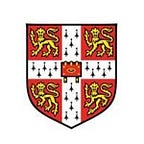Are you a dog-person, a cat-person, or a bear-person?
The Cambridge Animal Alphabet series celebrates Cambridge’s connections with animals through literature, art, science and society.
Here, P is for Pet. Cultural geographer Dr Philip Howell and PhD student Makoto Takahashi examine both the lighter and darker sides of pet keeping as a national obsession.
The scale of contemporary pet keeping is remarkable. In the US, ‘fur babies’ outnumber human babies. In the UK, almost a quarter of households have a dog and almost a fifth owns a cat. Fish (often listed among pets) are even more popular.
The keeping of these pets is one of the most significant of all human-animal relationships. The majority of pets live as part of the family. At the same time, many are poorly treated and animal activists have called into question the legitimacy of keeping pets at all.
What is a pet? The answer may seem straightforward: they are animals kept in the home for pleasure and companionship. But our interactions with pets are far more complex, rooted as much in ownership and domination as in sentimentality and affection.
In his recent book At Home and Astray, cultural geographer Dr Philip Howell explores the ways in which the Victorians brought favoured animals in from the cold, to enjoy a place at the centre of the domestic sphere, while relegating unwanted others to shelters and inevitable destruction.
Here Howell engages in a broad-ranging conversation about pets with PhD student Makoto Takahashi. They begin with a discussion about pets at their most extreme: the English poet Byron kept a bear at Cambridge and the French poet Gérard de Nerval walked a lobster on a silk ribbon. They go on to examine both the lighter and darker sides of pet keeping as a national obsession.
Listen to their conversation on SoundCloud.
Next in the Cambridge Animal Alphabet: Q is for a creature that has seen a dramatic decline in the past 80 years, with two of the UK’s 26 species now extinct.
